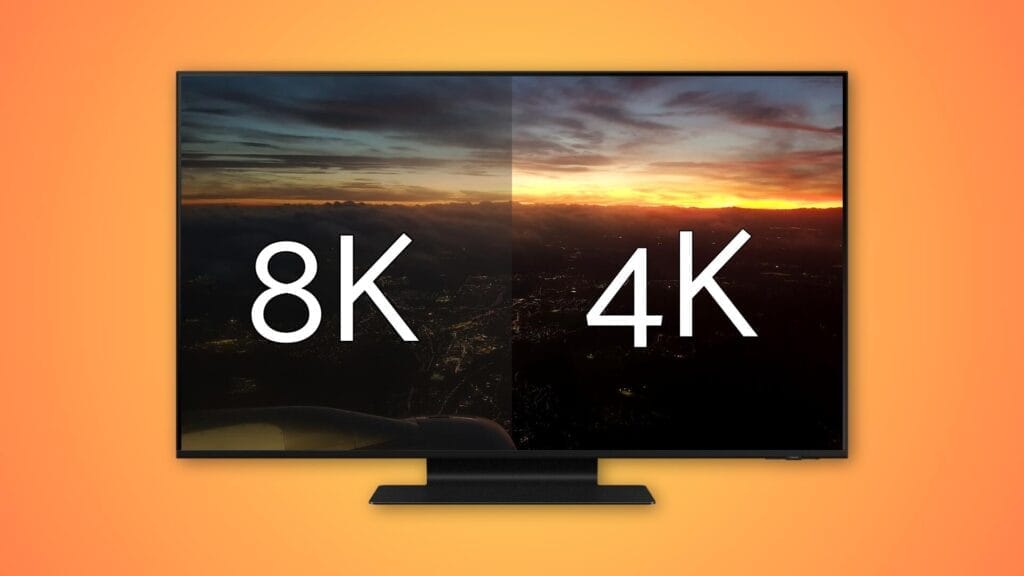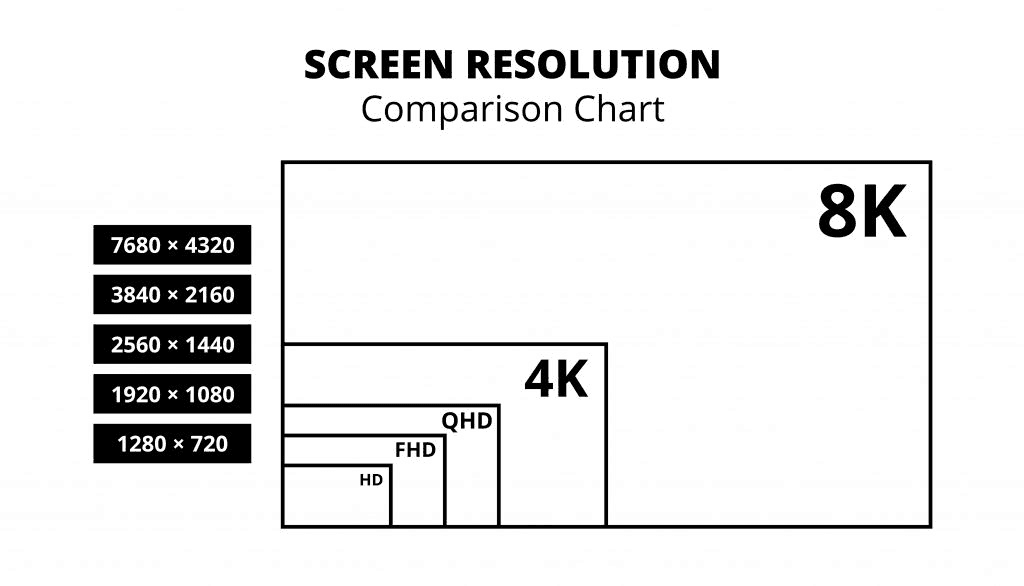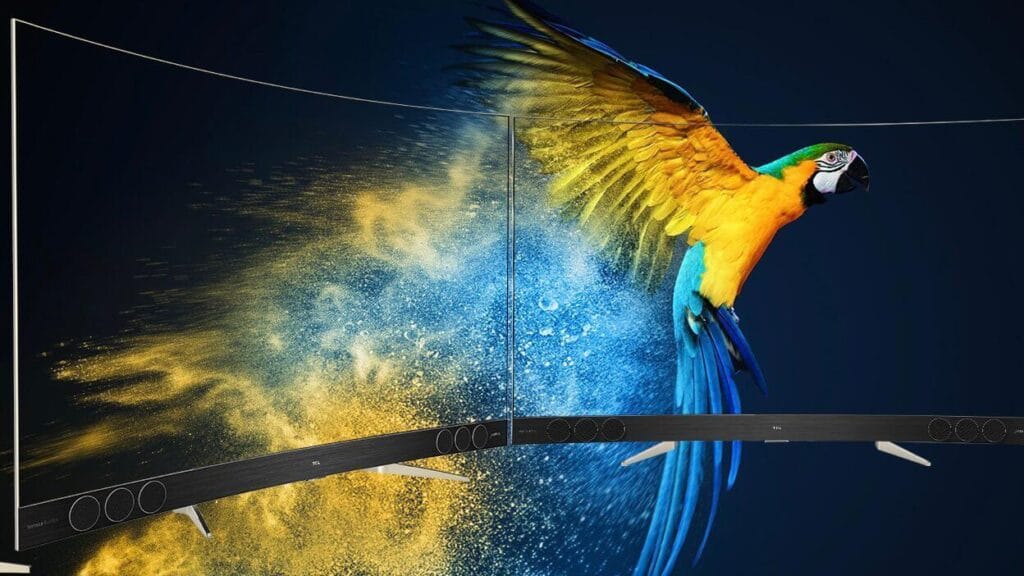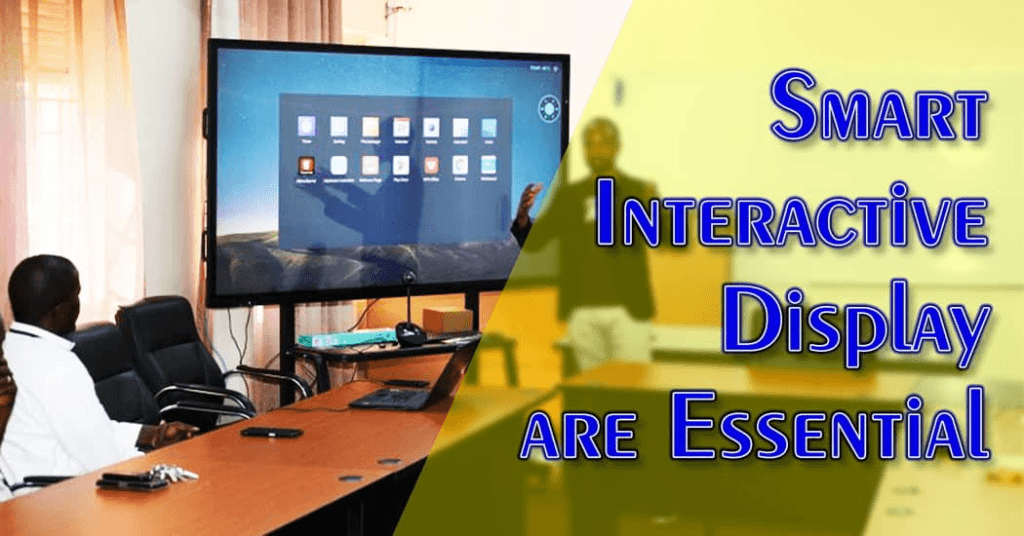
As the world of entertainment evolves, screen resolution plays an increasingly vital role in delivering an immersive viewing experience. With portable televisions becoming more popular for their versatility and convenience, the debate between 4K and 8K resolution has become more prevalent. Is 8K truly worth the investment, or is 4K sufficient for portable televisions? This blog explores the key differences between 4K and 8K portable televisions, with a focus on how these technologies can enhance your viewing experience. We’ll also take a closer look at screen technologies like OLED and QLED, and recommend some of the best portable televisions, including ONext products.
1. Understanding 4K and 8K Resolutions
Before diving into a comparison of 4K vs 8K, it’s essential to understand the basic difference between these two resolutions.
- 4K Resolution: 4K, or Ultra High Definition (UHD), refers to a display resolution of 3840 x 2160 pixels, offering four times the pixel density of 1080p Full HD. 4K resolution provides sharp and detailed images, making it ideal for portable televisions with screen sizes between 13 to 32 inches.
- 8K Resolution: 8K resolution takes it even further with a pixel count of 7680 x 4320, delivering four times the detail of 4K and sixteen times that of Full HD. While 8K content is still relatively scarce, this technology provides an unprecedented level of detail and clarity.

2. Portable Television Market and Growing Demand for 4K and 8K
As streaming services like Netflix and Amazon Prime continue offering more 4K content, the demand for portable televisions with higher resolutions is on the rise. Portable televisions are no longer just for casual viewing—they are being used for everything from gaming to watching movies with high-quality sound and picture. In fact, the portable television market is expected to grow significantly, with 4K and even 8K televisions leading the charge.
Many manufacturers, including ONext, are now producing portable televisions that support 4K and 8K resolutions. ONext has positioned itself as a leader in this area, offering models that cater to consumers looking for high-quality portable televisions for both entertainment and professional purposes.
3. OLED vs QLED: Which Screen Technology is Best for Portable Televisions?
When it comes to portable televisions, resolution isn’t the only factor that affects picture quality. The type of screen technology used—whether it’s OLED or QLED—can also have a significant impact. Let’s explore how these technologies perform in 4K and 8K portable televisions.
OLED (Organic Light-Emitting Diode)
OLED technology is known for its ability to produce deep blacks and vivid colors. This is because OLED screens do not require a backlight—each pixel is self-illuminating, which allows for better contrast and deeper blacks. When watching content in 4K or 8K on an OLED portable television, you’ll experience exceptional clarity and a true-to-life color representation, which is perfect for gaming or watching movies.
- Advantages of OLED in 4K/8K Portable Televisions:
- True black levels and infinite contrast ratio.
- Faster response times, reducing motion blur during fast-paced scenes.
- Wider viewing angles, ensuring no color degradation even when viewed from the side.
However, OLED screens can be more expensive, and there’s a risk of “burn-in” if static images are displayed for extended periods. Despite these limitations, the deep contrast and superior color accuracy make OLED an excellent choice for 4K and 8K portable televisions.
QLED (Quantum Dot Light-Emitting Diode)
QLED technology, often seen in Samsung’s televisions, uses a backlight and quantum dots to produce images. QLED screens tend to be brighter than OLEDs, making them ideal for use in brightly lit environments. QLED portable televisions in 4K and 8K resolutions can deliver vibrant colors and a wide color gamut.
- Advantages of QLED in 4K/8K Portable Tvs:
- Higher brightness levels, making it easier to view in bright surroundings.
- Longer lifespan compared to OLED, with less risk of burn-in.
- Excellent color accuracy, especially in well-lit rooms.
While QLED may not offer the deep blacks of OLED, its superior brightness makes it a solid option for 4K and 8K portable televisions, especially if you plan on using the television outdoors or in well-lit areas.
4. Resolution and Picture Quality: 4K vs 8K
When comparing 4K and 8K resolutions, the most noticeable difference lies in the pixel density. More pixels mean sharper images, and with 8K, you’re getting the ultimate in clarity. However, does this make 8K a must-have for portable televisions?
4K Resolution on Portable Televisions
4K resolution offers a sharp and detailed picture, especially on portable televisions between 15 and 32 inches. On these smaller screens, 4K is more than enough to deliver a rich and immersive viewing experience. Whether you’re gaming, watching movies, or working, the high pixel density ensures that you won’t see any pixelation, even up close.
8K Resolution on Portable Televisions
While 8K offers even more detail, the difference between 4K and 8K becomes less noticeable on smaller portable televisions. Unless you’re using a large-screen portable television (around 30+ inches), the human eye may struggle to distinguish the extra detail that 8K provides. That being said, 8K is still the future of television, and as more content becomes available in 8K, we may see this technology become more mainstream.

5. Power Consumption and Longevity
When choosing between 4K and 8K portable televisions, power consumption and longevity should also be considered. Typically, 8K televisions require more processing power and consume more electricity due to the higher pixel count and increased data being processed. However, advances in power-efficient chips and OLED technology are making it possible to enjoy 8K without excessive energy consumption.
In terms of longevity, both 4K and 8K OLED screens may experience burn-in if static images are displayed for long periods, though this issue has been reduced with newer models. QLED, on the other hand, doesn’t have the same burn-in issues and may offer better long-term reliability.
6. Gaming on 4K and 8K Portable Televisions
For gamers, resolution and refresh rate are critical factors that affect the overall experience. Many 4K portable tvs, including those from ONext, offer refresh rates of up to 120Hz, ensuring smooth gameplay with minimal input lag. While 8K portable televisions are still relatively new, they are designed to support next-gen consoles and PCs capable of delivering 8K output.
- 4K Gaming: The most accessible option for most gamers. 4K provides excellent detail and smooth performance, especially on smaller screens. Many games are optimized for 4K, making it the current standard for gaming.
- 8K Gaming: Future-proof, but currently limited by the availability of 8K content. Only high-end gaming PCs and consoles like the PlayStation 5 and Xbox Series X can output 8K, and even then, the difference in detail may not be as noticeable on smaller portable televisions.

7. Price and Availability: 4K vs 8K Portable Televisions
Currently, 4K portable televisions are much more affordable and widely available compared to 8K models. Manufacturers like ONext offer several 4K portable tvs at competitive prices, making them a great choice for budget-conscious consumers. 8K portable televisions are still on the higher end of the price spectrum, but as technology advances, we can expect to see more affordable options in the future.
8. ONext’s Portable Television Offerings
ONext is a brand known for delivering high-quality portable televisions, and they offer several models that cater to both casual viewers and gamers. Their 4K portable tvs feature OLED and QLED screens, providing stunning picture quality, vibrant colors, and deep contrast levels. As 8K portable televisions become more popular, ONext is expected to release models that push the boundaries of what portable televisions can achieve.
Conclusion: Is 4K or 8K Better for You?
When deciding between 4K and 8K portable tvs, consider your specific needs. If you’re looking for an affordable, high-quality portable television that delivers excellent performance, 4K is more than sufficient for most users. However, if you want to future-proof your setup and experience the cutting edge of display technology, an 8K portable television might be worth the investment.
ONext offers a variety of 4K portable tvs that cater to a range of users, from casual viewers to dedicated gamers. While 8K portable televisions are still relatively new, they are set to become the next big thing in display technology, and ONext is ready to lead the charge.
Whichever resolution you choose, portable tvs are evolving rapidly, offering high-quality entertainment in a compact and convenient package. Whether you opt for 4K or 8K, you’re sure to enjoy a stunning viewing experience wherever you go.
Feature recommendation

